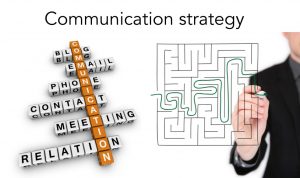
From small brands removing negative comments to large companies mistakenly posting inappropriate material, the social media crisis has come of age in our digital world. As we have become more dependent than ever on social media platforms to reach our many and diverse publics, we all, no matter how small or large your organization, run the risk of facing a crisis played out across Twitter, Facebook, LinkedIn, YouTube, Instagram and/or any other of the multitudes of today’s social media outlets.
Fight a social media crisis with social media water
In a social media crisis, responding in kind is the best way to go. By acknowledging the issue in the same realm it was generated, you allow your followers to be part of the response. Many times a crisis isn’t only started by one follower; your entire community is affected by the problem. In the words of my crisis communications professor, building a relief pressure valve whereby customers can vent allows an outlet while building your transparency and authenticity, two of six key principles associated with reputation management.
There is a difference, though, in offering a transparent and authentic space for your community to react and a single detractor who can’t be helped. Knowing when to go offline with an upset consumer is important to maintaining a healthy community. Understand the differences, such as privacy concerns and long discussion, between acknowledging the issue and allowing havoc in your tribe.
Commandments of social media crisis management
To ensure your social media crisis is handled quickly and effectively, follow these 10 rules by Professor Bill Smullen for the best recovery.
1. The need for speed
In 2013, Google Plus added 25,000 users a day. As one of the smaller but growing platforms, it goes to show how popular social media has become. Responding to a crisis quickly is essential to a strong recovery, and even more so in the social media realm. Stick to the one-hour response rule of thumb (though some experts now say social media crises should be responded to in as quickly as 20 minutes), and call it a fail if you haven’t responded on all your social media platforms within four hours of the incident.
2. Create a FAQ page for 24/7 access
Using the rule of thumb of one hour to respond in a crisis, you should have a ready-to-go page you can direct consumers and media members to with Frequently Asked Questions. On this page, include:
-Statement of fact of what has occured
-Any supplemental details you can release
-Photos/Videos helpful to packaging the story
-How the organization was alerted to crisis
-When the organization learned of the crisis
-What the effects are to the community
-What remedial actions are happening
-What steps are being taken to prevent future occurences
-Contact information for the spokesperson or office in charge of response
3. Monitoring non-stop
When a crisis strikes, you’re on a 24/7 scheduled until it ends. You and your social media team should be monitoring all platforms, looking for new information, dispelling any rumors that are popping up, and searching for engagement opportunities. Use analytic software, like HootSuite, to view unusually high volumes of mentions and interaction in real time.
4. Embrace the negative
Do not, let me repeat this in the blogospher’s equivalent to screaming, DO NOT delete negative comments about your brand unless they specifically violate the terms you have previously set forth. When I worked for the Department of Defense, no military social media account could permit the use of foul language. So, when negative comments included the F Bomb, then it could and was deleted. If the comment is just a complaint or some other criticism, engage don’t delete.
5. Arm your army
Your staff or if you’ve hired a social media freelancer to manage your accounts needs to know what you expect. Offer training for these people on the mechanics of posting and what the expectation is for engagement and response during a social media crisis.
6. The truth behind the apology
If you’re organization is in the wrong, own it. Apologize for what went wrong, express sympathy for the effects of the mistake, and tell show what steps you are taking to fix the problem and prevent it from happening again. Say your sorry and mean it.
7. Being Mr. Cellophane
In the sentiments of Amos Hart of Chicago, playing the part of Mr. Cellophane in a crisis would be preferable. In a crisis, however, you’ll be anything but and transparency is your best option. Be honest and forthcoming with your community in all instances.
8. Alerting the blogosphere
Part of being forthcoming is being quick to alert and respond to the media. In a social media crisis, bloggers can be your best friends or your worst enemies. Be sure your crisis communications plans include measures to work with bloggers that cover your industry.
9. Leave the trolls under the bridge
No matter how well you prepare for or manage a crisis, you’ll have the trolls. These are the haters that insist nothing you do is right or truthful or caring or anything remotely positive. You won’t be able to change their minds no matter what you try, so let them rant (see No. 4) and concentrate on the constructive feedback.
10. Open your ears
The saying about us having two ears and one mouth speaks volumes before, during and after a social media crisis. Listening and engaging with your community can prevent issues from turning into crises, gives you banked trust to lean on during a crisis, and can help you be more effective in handling future problems.
How do you handle a social media crisis?
The world of social media crisis management is growing and learning every day. What would you contribute to that body of knowledge?



